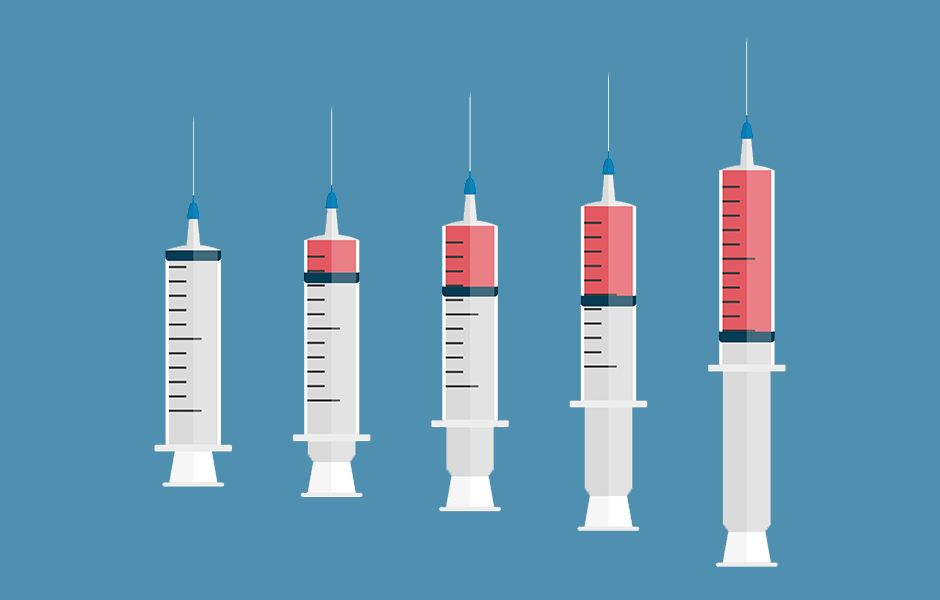Attention is the new currency in pharma marketing. With HCPs overwhelmed by information, delivering engaging, trust-building content is crucial. How can storytelling, interactivity and tailored strategies make your message stand out?
Words by Jade Williams
Attention spans are declining. According to new research, the average time spent looking at a computer screen before switching to another has fallen from 2.5 minutes to 47 seconds over the past 20 years. Capturing attention is now harder than ever and content needs a strong hook to cut through the noise.
Does this mean the days of mass marketing are over? Now that people want engaging content, personalised to them, in the way they want it. This notion has floated around pharmaceutical industry for a while, but so far pharma hasn’t shifted in line with the trend. How can marketing teams produce content that not only fosters engagement, but really reels HCPs in?
Adapt to changing waters
HCPs are already navigating an increasingly complex information ecosystem. Their time is scarce, and the sheer volume of material competing for their attention is overwhelming. As such, digital-first approaches can be mutually beneficial for both industry and HCPs, but is pharma hitting the mark as it stands?
Martina Dempsey, Vice President, Commercial Strategy & Operations, Astellas, notes at Reuters Events: Pharma Customer Engagement 2024, that “only 27% of HCPs are satisfied with the quality of digital engagement”. This stark statistic reveals a significant gap in pharma’s ability to connect meaningfully with its audience.
The reasons behind this disconnect are complex. Fragmented systems often prevent companies from delivering cohesive content strategies, while irrelevant or difficult-to-navigate material further alienates already time-strapped professionals. Veeva research highlights that 65% of HCP engagements are unsynchronised, resulting in inconsistent and disconnected customer journeys. The consequence? Missed opportunities to engage.
As Dempsey explains: “Customers expect information that’s equivalent to the best experience they have as consumers in their daily lives.” It’s a reminder that the bar for engagement has been raised, and pharma must adapt to meet the new standard.

Dare to be different
Everyone knows that first impressions are critical. As Rodney Smith, Vice President, Global Oncology Medical Affairs Franchise Head, Daiichi Sankyo, puts it at the Reuters event: “If you don’t bring value, you won’t get a second chance to engage.” To capture and retain attention, pharma needs to ensure that HCPs see their content as truly beneficial – tailored, timely and ultimately impactful for them and their patients.
One way to stand out in a crowded field is by adopting new formats, with interactive content being a key example. Adding interactive features to traditional medical education, such as clickable carousels, live percentages and data visualisations, makes learning more engaging and effective for HCPs.
This is crucial in the fast-changing healthcare field. EMJ’s research shows that interactive content generates significantly more engagement than static formats, with our analysis indicating up to 400% more sessions. To learn more about the power of this format, check out EMJ’s interactive content offering here.
Build a strong hook
In the sea of dense, complex information, storytelling can also act as an incredibly powerful tool. A good story doesn’t just convey information – it connects emotionally, making content more memorable and meaningful. Like opening a book that grabs you from the first page, pharma content needs to not only inform, but grab HCP attention.
This isn’t just a theory. Research by US behavioural scientist, Jennifer Aaker, indicates that stories are 22 times more likely to be remembered than facts alone.
Also speaking at the Reuters event, Sabine Louët, Founder, SciencePOD, shares her insights on the value of a narrative in the industry, noting that companies would “be very happy to get to the point where they’re telling a story that’s compelling enough to stick in the mind of a HCP”. However, this can be a challenge.
“When you’re in a highly regulated industry,” comments Louët, companies often want the ‘wow factor’ but aren’t able to get it through compliance. “By the time you get to [medical and regulatory], that wow factor is gone.” She goes on to note that “clear, concise and compelling” stories are key to ensuring efforts don’t go to waste. People resonate with the ‘why’ more than they resonate with the ‘how’, so leading with the right stories and a narrative in mind is crucial.
From hook to hold
But once an HCP’s attention is caught, how can companies ensure they win their sustained interest and trust? As Rob Verheul, Founder, Graphite Digital, points out at Reuters, companies “need to create content that makes HCPs want to come back, not just read and leave”. Delivering value consistently is essential. Whether it’s offering cutting-edge research, practical tools, or strategies that help improve patient outcomes, content must demonstrate its worth in both form and function.
But crafting compelling content is only one part of the equation. Delivering it effectively is equally important. In a fast-paced, digitally-driven environment, how you provide content and touchpoints can be just as impactful as what you present. According to Veeva data, a rep call is 30% more likely to result in a prescription if it’s followed by digital exposure within 10 days. When the message and timing are aligned, the potential for impact grows significantly.
“There is no such thing as omni-channel for marketing, omni-channel for medical, omni-channel for market access,” notes Dempsey. “There is only omni-channel for customer experience.” The key is not just to cast a wide net, but to consistently offer value that keeps HCPs hooked – for the long haul. As Verheul sums up: “It’s not just about what you launch, but about what keeps [HCPs] coming back.”

Small fish in big pond
The demands on healthcare professionals are mounting, and with them, the need for content that does more than inform — it must connect, resonate and build trust. In a sea of pharma marketing noise, quality isn’t just a luxury — it’s the only thing that ensures your message gets heard above the rest.









